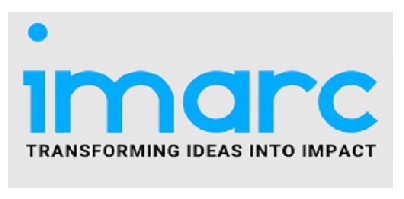Market Research Industry Today
Vietnam Facial Recognition Market Size, Share, Demand And Forecast 2025-2033
Vietnam Facial Recognition Market Overview
Base Year: 2024
Historical Years: 2019-2024
Forecast Years: 2025-2033
Market Size in 2024: USD 34.0 Million
Market Forecast in 2033: USD 102.1 Million
Market Growth Rate (2025-33): 12.99%
Vietnam facial recognition market size reached USD 34.0 Million in 2024. Looking forward, IMARC Group expects the market to reach USD 102.1 Million by 2033, exhibiting a growth rate (CAGR) of 12.99% during 2025-2033. The increasing utilization of biometric authentication in various industries, including smartphones, banking, and access control to unlock devices, access accounts, and enter secure premises, is driving the market.
For an in-depth analysis, you can refer sample copy of the report: https://www.imarcgroup.com/vietnam-facial-recognition-market/requestsample
Vietnam Facial Recognition Market Trends and Drivers:
Vietnam's facial recognition landscape is fundamentally shaped by the ongoing implementation and refinement of data protection regulations, notably the Personal Data Protection Decree (PDPD). This dynamic creates a dual effect: establishing essential consumer trust frameworks while compelling solution providers to rigorously enhance data security, algorithmic transparency, and ethical deployment practices. Simultaneously, significant momentum stems from deepening collaboration between government bodies and technology firms. Major national initiatives like the National Digital Transformation Program and provincial smart city projects are actively integrating facial recognition for enhanced public security, streamlined citizen services (e.g., national ID verification, e-KYC), and optimized urban management (traffic flow, public safety monitoring). This public sector push, demanding high accuracy and scalability, acts as a powerful catalyst, accelerating private sector innovation and adoption across banking, retail, and transportation. The dynamic interplay between evolving regulation ensuring responsible use and ambitious government digitalization goals demanding advanced capabilities is rapidly maturing the market, setting clear standards and fueling sophisticated solution development tailored to Vietnam's specific socio-technical context.
A critical dynamic involves the strategic shift towards hybrid cloud architectures and the rising importance of edge computing, driven by Vietnam's unique infrastructure and application needs. While cloud platforms offer essential scalability for large database matching and analytics, concerns around data sovereignty under the PDPD, latency for real-time applications (like access control or fraud detection), and bandwidth limitations in certain regions necessitate on-premise or edge solutions. Consequently, vendors are increasingly offering flexible hybrid models where sensitive biometric templates are processed locally at the edge – on devices like CCTV cameras, access terminals, or smartphones – ensuring rapid response times and enhanced privacy compliance, while less sensitive metadata and analytics leverage the cloud. This trend is particularly evident in banking for branch security and ATM transactions, retail for personalized customer engagement, and manufacturing for secure access control in sprawling facilities. The dynamic centers on optimizing the balance between computational power, speed, data residency requirements, and cost-effectiveness, making edge-enabled hybrid solutions the preferred deployment model for scalable and responsive facial recognition across Vietnam's diverse operational environments.
The market is rapidly moving beyond standalone facial recognition towards its integration within multimodal biometric systems and leveraging AI for functionalities extending far beyond mere identification. Recognizing the limitations of any single biometric factor, Vietnamese enterprises, especially in high-security finance (mobile banking, payment authorization) and critical infrastructure, are increasingly combining facial recognition with fingerprint, iris scanning, or voice verification. This multimodal approach significantly enhances security, reduces spoofing risks, and improves accuracy in diverse conditions. Concurrently, advanced AI algorithms are analyzing facial data for deeper insights. In retail, sentiment analysis gauges customer reactions to products or displays, enabling real-time marketing adjustments. Security applications utilize behavioral analytics to detect anomalies or potential threats within crowds. Workforce management systems assess attention or fatigue levels in industrial settings. This dynamic transforms facial recognition from a simple verification tool into a core component of sophisticated, AI-driven systems focused on security augmentation, operational intelligence, and personalized user experiences, vastly expanding its value proposition across Vietnamese industries.
Vietnam Facial Recognition Market Industry Segmentation:
Component Insights:
- Software
- Services
Technology Insights:
- 2D Facial Recognition
- 3D Facial Recognition
- Facial Analytics
Application Insights:
- Emotion Recognition
- Attendance Tracking and Monitoring
- Access Control
- Security and Surveillance
- Others
End Use Industry Insights:
- Retail and E-commerce
- BFSI
- Government and Defense
- Automotive and Transportation
- Media and Entertainment
- Healthcare
- Telecom and IT
- Others
Regional Insights:
- Northern Vietnam
- Central Vietnam
- Southern Vietnam
Competitive Landscape:
The competitive landscape of the industry has also been examined along with the profiles of the key players.
Ask Our Expert & Browse Full Report with TOC & List of Figure : https://www.imarcgroup.com/request?type=report&id=19730&flag=C
Key highlights of the Report:
- Market Performance (2019-2024)
- Market Outlook (2025-2033)
- COVID-19 Impact on the Market
- Porter’s Five Forces Analysis
- Strategic Recommendations
- Historical, Current and Future Market Trends
- Market Drivers and Success Factors
- SWOT Analysis
- Structure of the Market
- Value Chain Analysis
- Comprehensive Mapping of the Competitive Landscape
Note: If you need specific information that is not currently within the scope of the report, we can provide it to you as a part of the customization.
About Us:
IMARC Group is a global management consulting firm that helps the world’s most ambitious changemakers to create a lasting impact. The company provide a comprehensive suite of market entry and expansion services. IMARC offerings include thorough market assessment, feasibility studies, company incorporation assistance, factory setup support, regulatory approvals and licensing navigation, branding, marketing and sales strategies, competitive landscape and benchmarking analyses, pricing and cost research, and procurement research.
Contact Us:
IMARC Group
134 N 4th St. Brooklyn, NY 11249, USA
Email: sales@imarcgroup.com
Tel No:(D) +91 120 433 0800
United States: +1-631-791-1145
Share on Social Media



Other Industry News
Ready to start publishing
Sign Up today!








